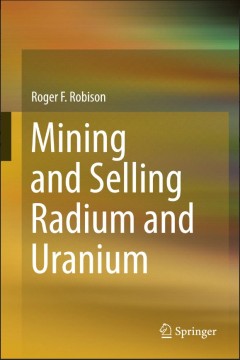Filter by

Emerging Issues in Sustainable Development International Trade Law and Polic…
This book seeks to answer the questions: how do the rules of international treaties on trade and investment apply to the new laws and policies relating to energy-related trade, and do the rules of the multilateral system contribute to or detract from sustainable development? An emerging set of new problems in the law of international trade is how to reconcile the rules of the multilateral trad…
- Edition
- -
- ISBN/ISSN
- 978-4-431-56426-3
- Collation
- 1 b/w illustrations, 2 illustrations in colour
- Series Title
- -
- Call Number
- -

The Smart City and the Co-creation of Value A Source of New Competitiveness …
The original point that differentiates this text from otherwise similar texts is that it looks at the building of smart cities from the viewpoint of an interchange of knowledge among companies in different industries, or “Ba” as shared context in motion, and emphasizes that the resulting value becomes a source of new corporate competitive advantage. In recent years numerous publications hav…
- Edition
- -
- ISBN/ISSN
- 978-4-431-55846-0
- Collation
- -
- Series Title
- -
- Call Number
- -

Modern Climate Change Science:An Overview of Today’s Climate Change Science
Composed of two extensive sections, this book surveys important work in climate change science, mainly in the United States, and introduces contributions to the body of science that have arrived on the scene between January 2013 and February 2014. The opening section offers a broad examination of contemporary climate change science, with subsections on the Intergovernmental Panel on Climate …
- Edition
- 1
- ISBN/ISSN
- 978-3-319-09221-8
- Collation
- XXV, 106
- Series Title
- SpringerBriefs in Environmental Science
- Call Number
- -

Emerging Bioresources with Nutraceutical and Pharmaceutical Prospects
This book introduces some emerging functional foods that are natural resources with tremendous promise as nutraceuticals and pharmaceuticals. The author considers biodiversity and bioprospecting as a response to food security issues, drug-resistance, nutrition-poor diets and other problems, exploring the prospects of several under-utilized nutrients and bioactive repositories. Readers will d…
- Edition
- 1
- ISBN/ISSN
- 978-3-319-12847-4
- Collation
- 4 b/w illustrations, 14 illustrations in colour
- Series Title
- -
- Call Number
- -

Mining and Selling Radium and Uranium
Presented here is the story of the mining and sale of uranium and radium ore through biographical vignettes, chemistry, physics, geology, geography, occupational health, medical utilization, environmental safety and industrial history. Included are the people and places involved over the course of over 90 years of interconnected mining and sale of radium and uranium, finally ending in 1991 with…
- Edition
- 1
- ISBN/ISSN
- 978-3-319-11829-1
- Collation
- XV, 265
- Series Title
- -
- Call Number
- -

Model-Based Processing for Underwater Acoustic Arrays
This monograph presents a unified approach to model-based processing for underwater acoustic arrays. The use of physical models in passive array processing is not a new idea, but it has been used on a case-by-case basis, and as such, lacks any unifying structure. This work views all such processing methods as estimation procedures, which then can be unified by treating them all as a form of joi…
- Edition
- 1
- ISBN/ISSN
- 978-3-319-17556-0
- Collation
- X, 113
- Series Title
- SpringerBriefs in Physics
- Call Number
- -

The Sava River
This volume provides a comprehensive overview of environmental aspects of the Sava River, which is the greatest tributary to the Danube River and the major drainage river system of South Eastern Europe. Hydroelectric power plants, river traffic, intensive agricultural activities, heavy industry and floods have considerable influence on the environment and biota in the basin. Summarizing the res…
- Edition
- -
- ISBN/ISSN
- 978-3-662-44034-6
- Collation
- -
- Series Title
- -
- Call Number
- -

Methane Combustion over Lanthanum-based Perovskite Mixed Oxides
This book presents current research into the catalytic combustion of methane using perovskite-type oxides (ABO3). Catalytic combustion has been developed as a method of promoting efficient combustion with minimum pollutant formation as compared to conventional catalytic combustion. Recent theoretical and experimental studies have recommended that noble metals supported on (ABO3) with well-order…
- Edition
- 1
- ISBN/ISSN
- 978-3-662-46990-3
- Collation
- XXII, 103
- Series Title
- Springer Theses
- Call Number
- -

The Role of Natural and Constructed Wetlands in Nutrient Cycling and Retentio…
Natural and constructed wetlands play a very important role on the landscape and their ecological services are highly valuable. In fact, some wetland types are regarded as one of the most valuable ecosystems on the Earth. Water management, including flood water retention, biomass production, carbon sequestration, wastewater treatment and biodiversity sources, are among the most important ecolog…
- Edition
- -
- ISBN/ISSN
- 978-3-319-08177-9
- Collation
- -
- Series Title
- -
- Call Number
- -

Microbial Degradation of Synthetic Dyes in Wastewaters
Today synthetic dyes are used extensively in the textile dyeing, paper printing, color photography, pharmaceuticals, food and drink, cosmetic and leather industries. As of now, over 100,000 different dyes are available, with an annual production of over 700,000 metric tons. These industries discharge an enormous amount of colored effluents into natural water bodies, with or without treatment. T…
- Edition
- 1
- ISBN/ISSN
- 978-3-319-10941-1
- Collation
- XIV, 367
- Series Title
- Environmental Science and Engineering
- Call Number
- -
 Computer Science, Information & General Works
Computer Science, Information & General Works  Philosophy & Psychology
Philosophy & Psychology  Religion
Religion  Social Sciences
Social Sciences  Language
Language  Pure Science
Pure Science  Applied Sciences
Applied Sciences  Art & Recreation
Art & Recreation  Literature
Literature  History & Geography
History & Geography